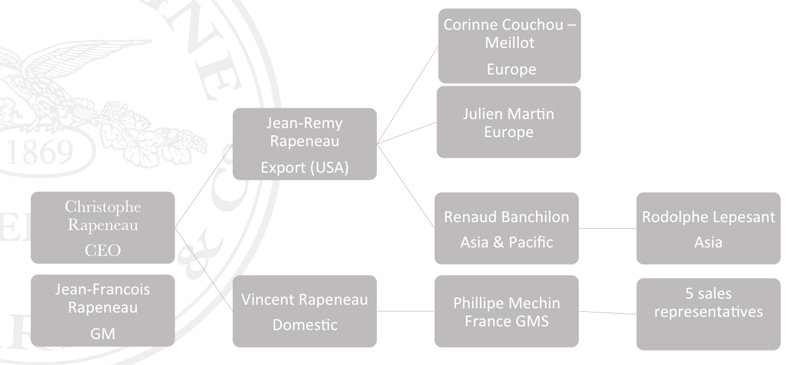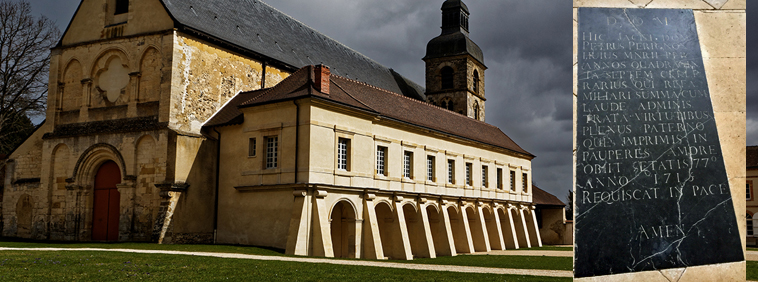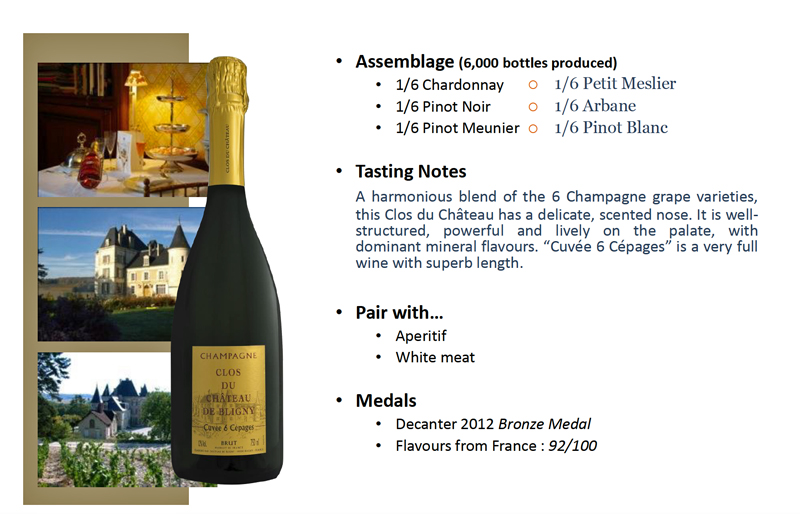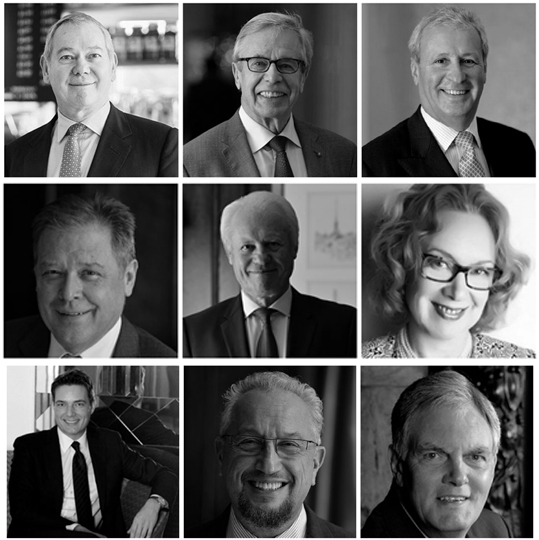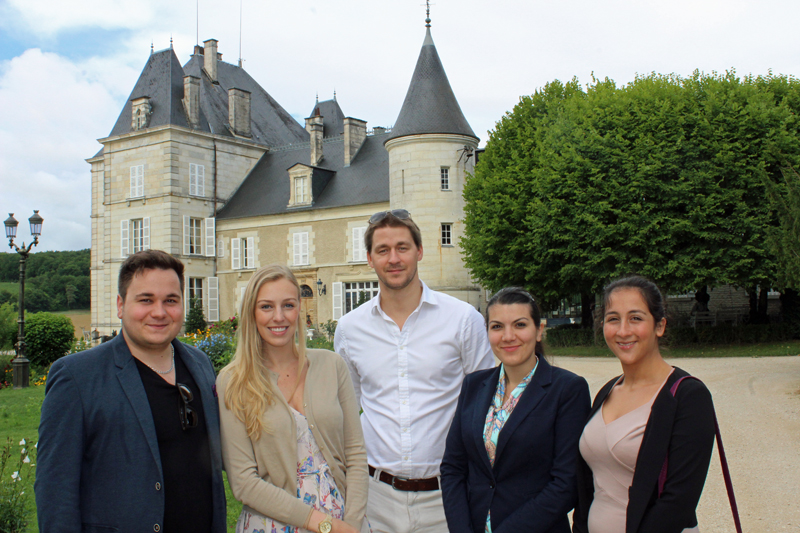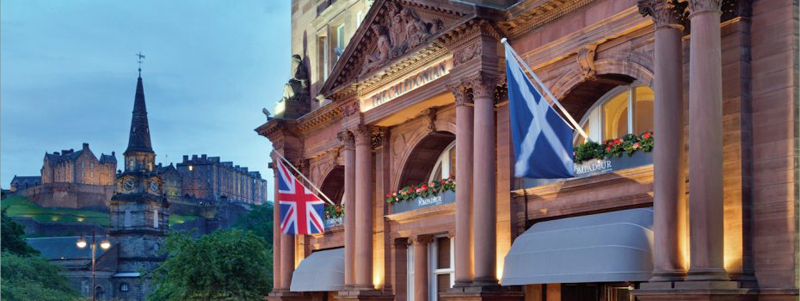
The Pompadour by Galvin is the fine dining restaurant of the prestigious Caledonian Hotel in Edinburgh, part of the Waldorf Astoria group. On my first visit two years ago I was surprised to find that this elegantly proportioned room – rather like a Parisian salon – bore few other traces of the French rococo style prevalent in the mid-18th Century, when the eponymous mistress of Louis XV held sway at Court. Given its name, I was expecting it to resemble The Ritz or Le Meurice, with their highly ornamental yet graceful décor, furniture and fittings, enhanced by artwork with oriental and mythical themes.
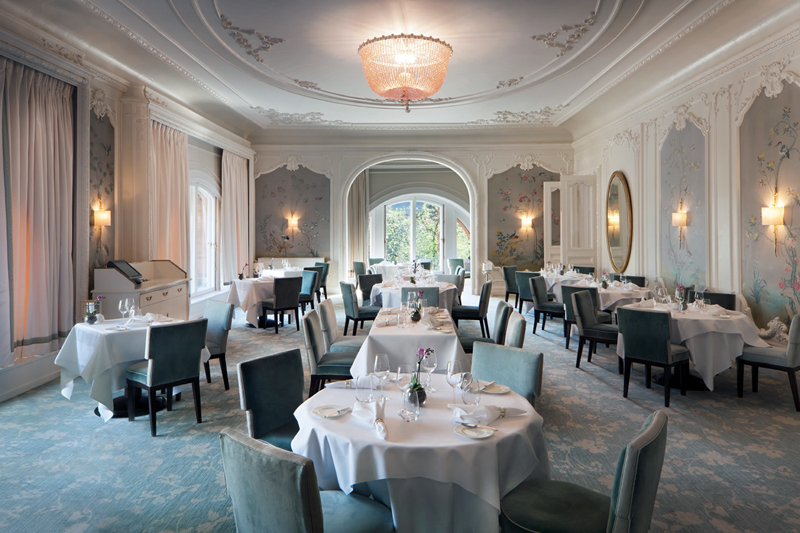
Nevertheless, the restrained Belle Epoque design has a more soothing if less glamourous effect. The soft grey walls are punctuated by exquisite hand painted Chinese floral panels in egg shell colours. Above, intricate cornicing, a delicate ceiling rose and a central pink chandelier add interest. Well-spaced tables, some by the large semi-circular windows enjoying views of Edinburgh Castle, are doubly dressed in fine napery and matched with comfortable upholstered chairs.
After extensive refurbishment of the Caley, as the Caledonian is affectionately known, brothers Chris (right, below) and Jeff Galvin (left, below) added The Pompadour by Galvin (and Galvin Brasserie de Luxe in Edinburgh) to their rapidly expanding gastronomic empire in the autumn of 2012.
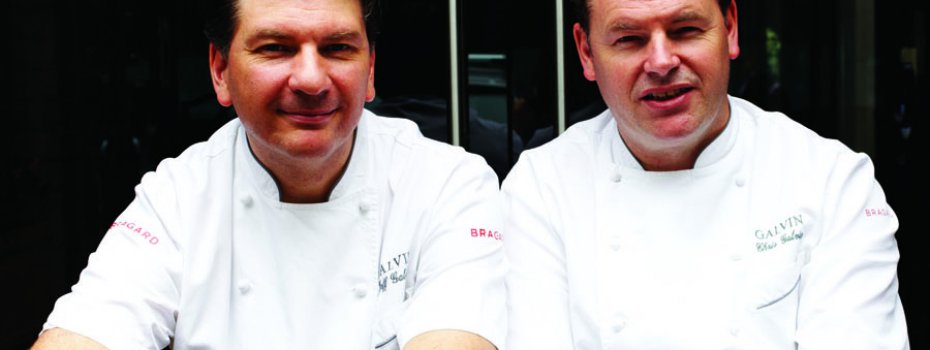
Since March 2017, Daniel Ashmore (below) has been head chef. His distinguished CV at Michelin starred kitchens includes three years at Fischers at Baslow Hall, two years at The Square in Mayfair, a year at Restaurant Tom Aitkens and La Trompette, and three years at the Balmoral Hotel in Edinburgh, where he rose to sous chef at restaurant Number One.
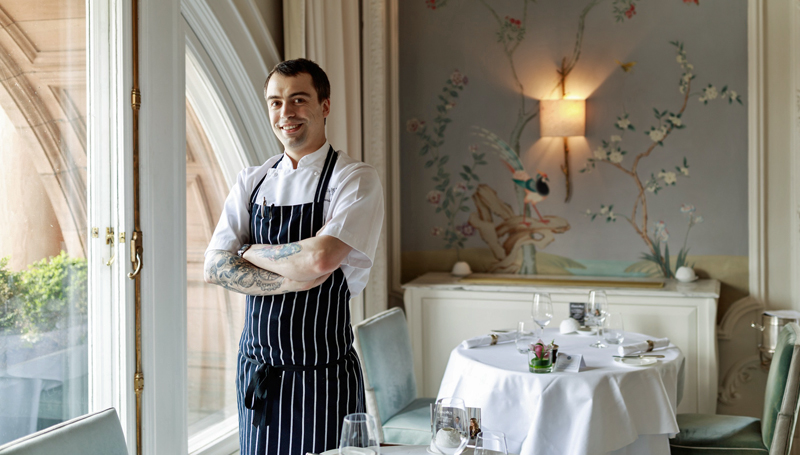
With a cuisine strongly rooted in the French classics, giving “quality and luxury in simplicity,” diners are treated to dishes bearing the refined elegance of the Galvin stamp. Menus change seasonally, featuring the best of British ingredients, although there are signature dishes such as crab lasagne, halibut with langoustine bisque, mussels, cockles & squid ink farfalle, and apple tarte tatin which it would be difficult to take off the menu. Ingredients harmonise well in taste, texture, temperature and colour, with accuracy in the timing of meat and fish. Presentation shows a conscious artistry with a willingness not to overcrowd the plate. My one minor criticism of the tasting menu is that full sized portions from the a la carte menu – say of cured foie gras or beef fillet – were obviously halved, being less aesthetically pleasing than a smaller portion prepared for one.
This does not apply to the Lasagne of Crab of which the chef kindly substituted a full sized portion for the advertised first course on the tasting menu. Intensely rich but light, it features silky, soft layers of pasta sandwiching a well-seasoned delicate mousse of scallops and the white meat of North Berwick crab. Dressed with a velvety beurre Nantaise, flecked with chives to add a gentle oniony lift, the unashamed creamy indulgence of this signature dish is a tour de force of creativity and imagination. A Galvin classic dish, this is not to be missed on any visit. Wine: Pinot Gris, Greywacke, Marlborough, New Zealand, 2014

Next came a duo of plump Wye Valley green asparagus spears, grilled to enhance their robust flavour and to produce an al dente texture. Accompanied by a creamy burrata Mozzarella enlivened by a topping of Kalamata olives and olive oil, this dish encapsulated the vibrant flavours and colours of early summer. Wine:The flower & the bee, Cotto de Gomariz, Ribeiro, Spain, 2015
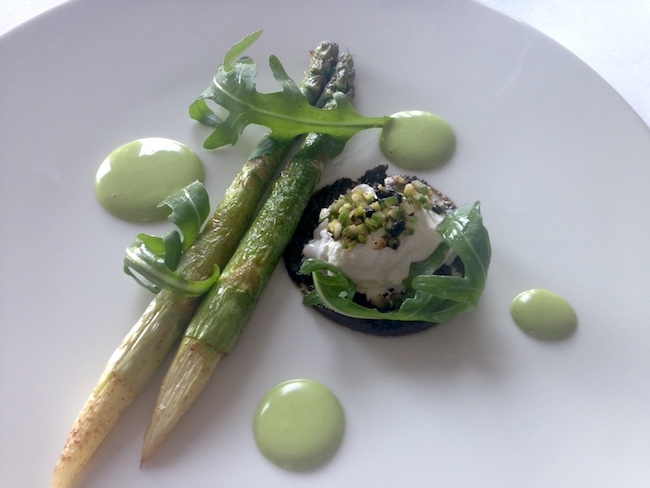
A well seasoned slice of cured foie gras melted on the tongue like the richest butter. The bitterness of endive and the acidity of orange compote worked well in balancing the richness of this delectable piece of offal, both in texture and flavour. Classically served with toasted brioche, here was another accomplished dish that offered “quality and luxury in simplicity.” Wine: Riesling, Smaragh, Burgstall, Weingut Pichler, Austria, 2015
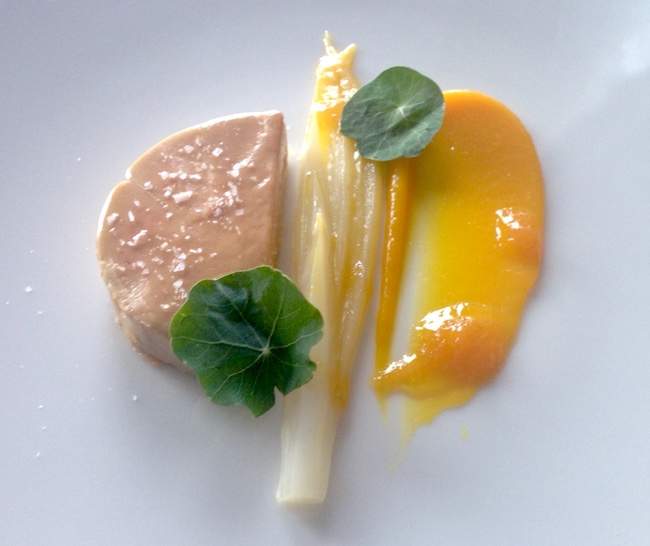
The fish course featured a precisely timed fillet of Loch Etive sea trout, with soft moist flesh and crisply seared skin. Light pillows of herb gnocchi, sea beet and mussels added interest, whilst the whole dish was bought together by a light,flavoursome broth. Wine: Weiber Burgunder, Trocken, Weingut, Huber, Germany, 2011

For the meat course, a fillet of Cumbrian beef precisely cooked to a medium rare, was well seasoned and rested. A square of potato mille feuille – a variant of fondant potato – artichoke barigoule and a wedge of braised white cabbage were suitable accompaniments. Shallot purée was subtly sweet and creamy but slightly at odds with a pool of piquant sauce béarnaise. Although the various components of this meat course were skilfully prepared, I feel they did not work together as a coherent whole. Although not dry, perhaps a veal based sauce rather than the béarnaise might have improved the combination and finished look of the dish. Wine: Taurasi, Vesuvo, Manuel Barbone, Campania, Italy, 2009
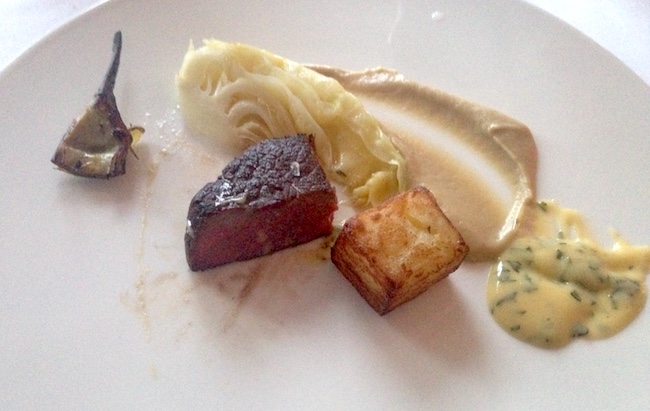
For a simple cheese course, a slice of truffled Brie de Meaux, in perfect condition, came with spiced grape chutney and home-made biscuits. Wine: Krohn Port Colheita, Douro, Portugal, 1998
Warm raspberry soufflé, so often a disappointment in flavour in lesser establishments, was a triumph here. Well risen, light and bursting with the sweet sharpness of the fruit’s acidity, it confirmed the superior quality of Scottish raspberries. Enhanced by a tangy, smooth yogurt sorbet, this dessert exemplified the strengths of the pastry section of the kitchen. Wine: Contero, Brachetto D’Acqui, Piedmont, Italy, 2016
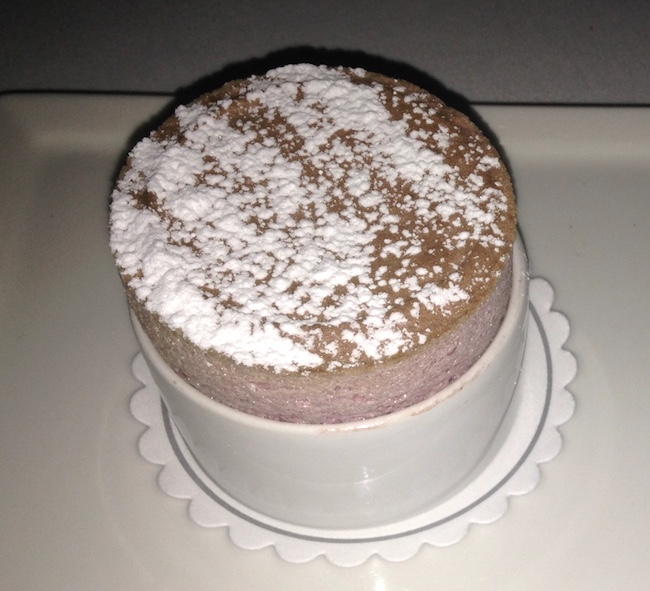
Good coffee and petit fours completed this seven course tasting menu. The enjoyment was enhanced by the front of house team providing seamless service that is professional but not haughty. They work under the watchful eye of Jon Hemy whose hosting is welcoming, warm, engaging and informative. Sommelier Damien Trinkquel, whose experience includes The Glasshouse and La Trompette, advised knowledgeably on the wine, showing a passion that comes from a successful career in the industry.
Clearly, The Pompadour by Galvin is in capable hands, both in the kitchen and front of house. In the highly competitive market of high end Edinburgh restaurants, which has blossomed in recent years, it is more than holding its own. Fine Dining Guide will visit again, following its progress with interest.








